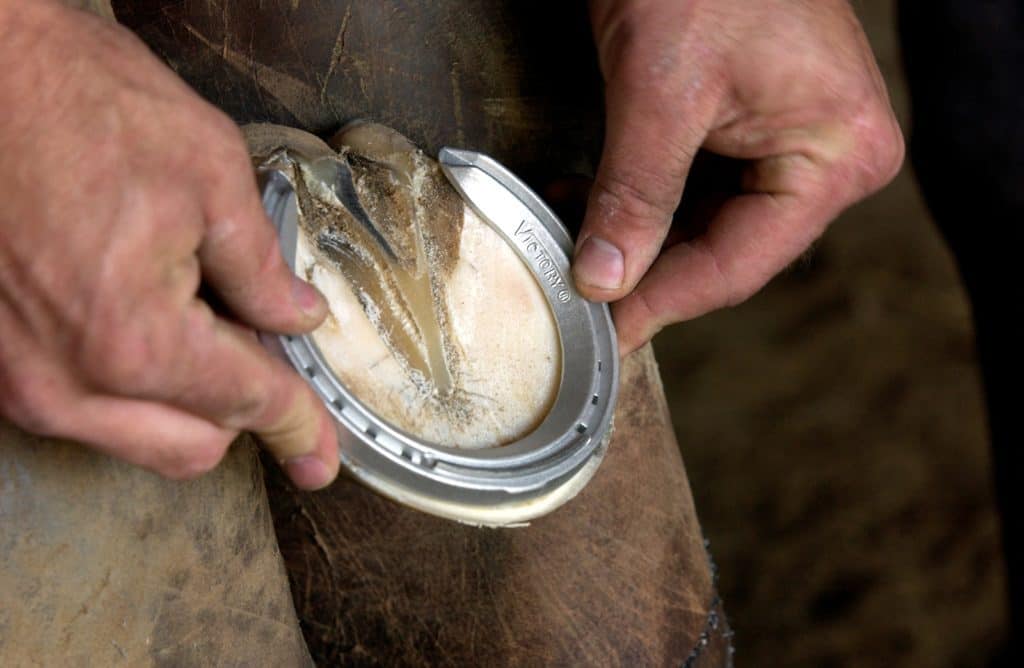The Natural Hoof: A Sign of the Times
The feet of wild horses have been able to adapt to their environment, while the feet of domestic horses seem to consistently fail at adapting and instead collapse, crack, flare, and bruise.
The feet of wild horses have been able to adapt to their environment, while the feet of domestic horses seem to consistently fail at adapting and instead collapse, crack, flare, and bruise.
In spite of the best care given to horses in the history of their domesticated lives, record numbers of carefully bred, reared, and trained saddle horses are prevented from fully athletic lives by the crippling disease known as navicular syndrome.”n spite of the best
The name of the conference might be misleading, because the 10th Annual Bluegrass Laminitis Symposium in Louisville, Ky., covered topics from how nutrition affects hooves to what stimulates hooves to grow. The theme of this year’s symposium was
Winter’s finally over and you’re ready to roll down the road. Your horse is fit, you’ve been coached to new heights, and visions of blue ribbons dance in your dreams. Suddenly, your happy dream turns into a nightmare as you recall what happened
Shoeing is necessary to protect the hooves of many hard-working horses, and nails are of course an important part of the process. Ideally, horseshoe nails enter the outer hoof wall, which lies adjacent to the quick, or the sensitive laminae”P>Shoeing is necessary to protec
When your farrier and/or your veterinarian discuss how to solve the hoof problems you are encountering with your horse–be it from injury or disease–you will be better able to understand your options, and get your horse back on his feet in the short
Of all the medical crises that can afflict a horse, laminitis surely is one of the most alarming. Horribly painful, and potentially devastating to his long-term soundness, the strange syndrome whereby the coffin bone inside the hoof begins to
By leaving a horse barefoot, one allows the hoof’s natural functions of shock absorption, traction, and biomechanics to perform at their optimum. Shoes inhibit natural function and the horse’s natural way of going, and limb interference with shoes
We often assume a horse needs shoes without really thinking about why or how that affects a horse’s overall health. Yet standard veterinary texts, such as books by James Rooney, DVM, and O.R. Adams, DVM, on
Generally speaking, the average horse used for trail and pleasure riding should have its feet trimmed or reshod every six to eight weeks.
The barn manager said my horse was graveled and called the veterinarian. Could you please explain what that means?”he barn manager said my horse was graveled and called the veterinarian. Could “e barn manager said my horse was graveled a” barn manag
While many of our horses do some kind of work for a living, the work usually consists of a couple of hours a day, three to five days a week. Many of our horses are ridden far less than that, and we don’t really think of them as working for”P>While many

My horse has been diagnosed with a fractured coffin bone. What could have caused it, and what is the prognosis?

Understanding the various types of equine footwear can help owners decide which shoes suit their horses best.
The American Farrier’s Association Convention held in Lexington, Ky., March 3-6, was planned with the professional farrier in mind. While the lion and the lamb vollied outdoors throughout the four-day event, inside the convention center farriers
Stay on top of the most recent Horse Health news with
"*" indicates required fields